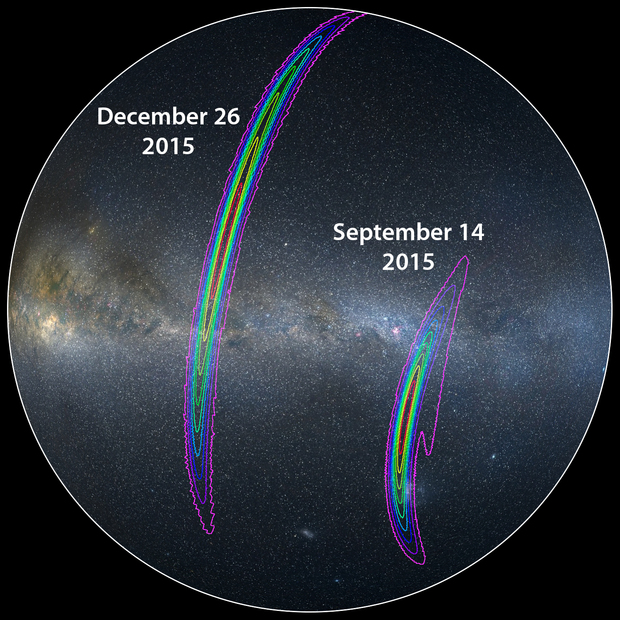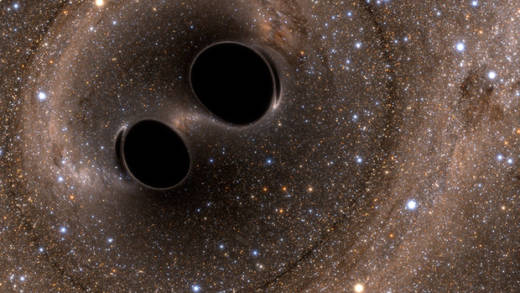One of the most remarkable science stories of the year was the discovery, a century after it was predicted by Albert Einstein, that gravitational waves are real. Today Science magazine named the discovery the 2016 Breakthrough of the Year.
Gravitational waves are distortions in the fabric of spacetime. Back in 1915, Einstein hypothesized these ripples would travel throughout the universe, bending and squeezing space like the surface of a trampoline.
It is mass, according to Einstein’s theory of general relativity, that warps the fabric of space. If the mass is great enough, then other objects will fall towards them, as the Earth is pulled toward the Sun in its rotation. We know this as gravitational attraction. When the distortions travel through space, they’re known as gravitational waves.
Earlier this year, researchers with the Advanced Laser Interferometer Gravitational-Wave Observatory (LIGO) announced that they had discovered direct evidence of gravitational waves, by matching distortions picked up at two highly precise, identical detectors on different sides of the country. They’d each seen the same disturbance at the same time on September 14, 2015. (The feat was repeated on December 26, 2015 when both detectors felt a gravitational wave again.)

“There it was!” LIGO team member Daniel Holz told Nature. “And it was so strong, and so beautiful, in both detectors.” Although the shape of the signal looked familiar from the theory, Holz says, “it’s completely different when you see something in the data. It’s this transcendent moment.”
